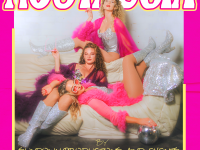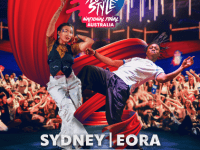
THE METHODOLOGY OF TEACHING
– by Francois Klaus and Robyn White –
Dear All,
Quite recently I was most lucky to be made aware of a new website belonging to Francois Klaus [ ex – Artistic Director of the Queensland Ballet ] and his wife Robyn White [ ex – Artistic Associate of the Queensland Ballet ]
Upon visiting the website I found the most interesting and in depth commentary from both artists on their “methodology “ of teaching classical ballet.
Whilst it is true that their comments pertain mainly to working with professional dancers in the context of teaching classical ballet, I found that their awareness of all that it takes to communicate dance from one person to another quite extraordinary. And I feel that this knowledge could cross all genres of dance and teaching at all levels, as it really gave me pause for thought.
With their permission, I have provided below an exact transcript of their words – in truth a copy and paste job, for you all to read.
There is so much wisdom, intellect, thought, passion, and artistry in both person’s comments and a true insight into the world of teaching dance that I trust all teachers, aspiring teachers, dancers and professionals will enjoy soaking up their philosophies and basking in their methodology for a moment or two.
So – please – enjoy the wisdom that comes from a lifetime and two careers, dedicated to dance and passing on a very specialized craft from one generation to the next!
FRANCOIS COMMENTS ON THE METHODOLOGY OF TEACHING
You would think there’d be no secret to training a ballet company. The rules of classical ballet are very well defined; set curriculums and systems of progression in teaching exists in all the major ballet schools of thought. There is also a significant amount of literature left by influential ballet teachers giving numerous examples of step combinations. Furthermore, any teacher or ballet master is sure to have been a dancer at some point of with an enormous amount of experience in ballet classes. Yet I know that professional ballet training across the world ranges equally from training that truly develops the dancers’ craft to training that merely “warms up”, or even training that is frankly so bad that its only asset is to teach you what not to do.
Throughout my life as a dancer I was exposed to many different approaches to teaching. In my early training I was exposed to the French School with a strong influence from Rudolf Nureyv (who was working with Marika Besabresova at the time) and Erik Bruhn who introduced me to Bournonville.
Later on in Stuttgart I was exposed to the systems of the Royal Ballet School (John Cranko liked the clear lines and intricate footwork of the English) and at Hamburg Ballet there was a strong Balanchine influence under Truman Finney. Finally, Irena Jacobsen reintroduced me to the Kirov school of thought in my later dancing years.
I worked under these different methods for years at a time. Eventually I was able to determine how the different approaches developed different strengths (as well as weaknesses in some domains). This is an understanding that took time to develop however; as a dancer it is easy to tell whether a class feels ‘good’ or not but it can be difficult to distinguish between step combinations that encourage real progress and combinations that are merely fun or even just fashionable (some popular combinations really aren’t very good but become such a staple they are practiced everywhere).
As dancers start to teach, they tend to cater to dancers of their own body type and temperament, forgetting to take the vast array of different body types and abilities of a full company into account. For example, dancers who were very fast and naturally agile have the tendency to give class a little too fast. Similarly, a teacher with choreographic aspirations may create complicated combinations in class for his own fulfillment rather than for the development of his dancers.
With this in mind, good teaching fundamentally requires an understanding of classical ballet on many levels that may not be immediately apparent to the dancer. The most fundamental of these in my opinion is an awareness of how to structure sequences with musical sensitivity. For example, many teachers miscalculate the time it takes to do difficult steps cleanly leading to a mismatch with the music. This means that if the dancer executes one step of the combination well, it makes him late for the next one. The result is that the dancers either fight to be on the music and sacrifice the cleanliness of the exercise or ignore the music in order to do the steps properly.
While it is true that the optimum speed of any step varies with every dancer’s body type and temperament, at the same time most steps, in particular jumps and turns, have a “natural tempo” of execution that should be respected. Of course it can be brilliant to watch a step combination taken out of its comfort zone but in my view this is more of choreographic interest and should remain an exception in class. In training, excessively fast or excessively slow tempos that go beyond the dancers’ control encourage faults.
In a healthy step combination on the other hand, the timing and relationship of steps to one another encourages the dancer to do the steps correctly. This requires a thorough understanding of the required body mechanics as well as an understanding of how one step transitions into another; the execution of any step will vary according to its preceding and the following steps. Finally, the combination must be phrased with musical sensitivity.
There is yet another level of understanding which has to do with reaction and opposition to movement. To use a simple example, if the dancer pushes and opens his arm to the right, his body will automatically push to the left a bit. A similar effect will take place if he closes his left arm towards him; his body will automatically push to the left. The timing of these actions will greatly affect the dancers’ ability to turn and pirouette. Some dancers grasp this principle instantly through natural coordination. However, even though they may be able to demonstrate with surety, an excellent dancer whose technical achievements are primarily reliant on instinct and natural coordination will find these body mechanics difficult to teach and explain.
Finally, there are some other factors to consider. You have to develop an understanding of choreographic complexity, the use and limits of repetition and an ability to balance the composition of the class with a natural evolution of exercises (a brilliant combination at the wrong part of the day can be disastrous.) But the biggest secret is probably this; there are some pieces of advice that are fundamentally applicable to all dancers, and others that are deeply personal to you. Dancers react differently to different approaches, according to physical type and temperament. So be able to distinguish between the universal and the individual, and share your personal gems pragmatically.
ROBYN’S COMMENTS
People often speak of technique and artistic quality as two separate and unrelated concepts. I believe they belong together. A dancer may feel they can express a lot but without a framework or the “corset” of good technique, their expressive dancing will very likely just look amateur. Conversely, a dancer may be able to do many pirouettes, jumps and fashionable “tricks” but if these steps are poorly linked, if the dancing is not harmonious and smoothly co-coordinated, their dancing will have more to do with sport than art. In both cases the problem is more that of emotional disposition than physical limitations. My work as a teacher endeavors to tackle these problems and develop technique and artistic sensibilities simultaneously.
I believe the first step is to create an atmosphere conducive to this in the morning class. It is the first part of any dancers’ daily work where they will train in groups of anything from 15 to 60 dancers at a time. When you walk into the studio as company teacher, the dancers are invariably lying down, stretching and talking amongst themselves; they are tired, some are sore, some injured, some caffeine-deprived and some possibly hung-over. Probably none of them really feel like engaging in the total physical commitment and exertion that is going to be expected of them. Nevertheless your job as teacher is to bring them from this slipshod state to one of energy, focus, productivity and enjoyment – all within 75 to 90 minutes.
Many teachers resort to their own personal energy input and charisma in order to achieve this. They talk in a loud voice and give a running commentary of corrections and/or encouragement. Indeed, in the early days of my dancing career a good teacher was synonymous with these sort of motivational tactics; the class was easily as much about the teacher as it was about the dancers.
Under the influence of George Balanchine and the likes of Stanley Williams in New York however, an alternative, quieter atmosphere was introduced encouraging a focus initiating from the dancers rather than the teacher. Fuelled by the embrace of jazz and contemporary music by choreographers throughout the 20th century, this school of thought also encouraged teachers and dancers to rhythmically train the muscles to the music (previously it was fashionable for ballet pianists to alter the music so as to follow the dancer rather than other way round.) Doubly developing technique and a degree of rhythmical musical sensitivity, this became a most productive way to use the barre to warm up.
The body feels marvelous when worked consistently in this fashion. It is a method that I was fortunate in being able to study for some years and which, with the support of excellent pianists, I have incorporated into my own class. Little time is spent explaining in the first part of the class, the exercises follow in quick succession and need to be rhythmically perfectly calculated. From a teacher’s perspective the added advantage is that the dancers’ concentration is more on the actual class than on the teacher’s personality. Working together on a daily basis the dancers are going to get tired of you, no matter how entertaining or charismatic you may be, so bringing the focus back to them is a good antidote to this.
Even in class, it is easy to see that most dancers tend to work unequally with regard to their technique and artistry. In great dancers however, both aspects are not only well developed but co-dependant and this is the ideal to strive for.
For dancers who are spiritually free with facility of movement but impatient and unclean, you need to find a way to “rein them in”; to have them understand that detail and discipline are very much a part of a mature approach to an art form. This doesn’t mean you have to resort to constant nagging; it can be done with humor and good grace.
On the other end of the spectrum are the dancers who are born perfectionists with natural discipline but have trouble with abandonment in their dancing. They may struggle with interpretation, projection or musical phrasing. In dancers with this particular problem, imagination needs to be encouraged at all times. I think it’s so important for dancers of any age to feel there is no limit to the use of their imagination; it breathes life into the rules and discipline of classical ballet. Imagination also doesn’t need to be treated with much reverence. I find drawing unexpected, even silly analogies with what needs to be achieved is a very effective method of drawing dancers “out of their skin”. For this reason I also feel that associated disciplines such as drama, physical theatre, music and other dance forms are very useful for the dancer’s overall versatility and flexibility of spirit.
You can also develop a dancer’s artistic sensibility from a more technical standpoint. The linking of steps for example, the understanding of the correct transfer of weight, is something that is often neglected by teachers and some teaching systems. It is vital for both harmony of movement, without which it is difficult to have an artistic quality, as well as technical prowess. I am so glad to have been able to study it for some years with Kirov teacher Irene Jacobsen. It is a concept you can use advantageously on all levels, from children onwards and on all physiques, including those not particularly cut out for careers in classical ballet.
Finally, with regard to both technique and artistic development, it is essential that you nurture the dancer’s ability to learn. This means that for clarity’s sake, you need to differentiate between corrections that can be given dogmatically and those that can’t. For example, you can be very firm about righting a sickled foot, hunched shoulders or unmusical dancing; these are universal corrections. There are other pieces of advice you will have gleaned from your own years of personal experience however; these will probably work for some dancers but not for all. Body types and temperaments are so different that while you may have a storehouse of personal tricks that serve you well, it doesn’t mean they should be considered universal revelations in dance technique. I usually qualify these personal directions with “I suggest you try” or “Try this, you may be asked to do it another way, but for now try this way.” Even with younger dancers, this introduces the idea of an unending search, the permanent evolution of dance technique and keeps the concepts of flexibility and ongoing analysis alive. Only a dancer who is analytical and curious can stay on the path of constant development.
So – as I said earlier – food for thought! And sumptuous food at that!
May you all enjoy basking in the joy of reading those words and perhaps taking some of their concepts into the classroom with you when you next teach.
And for more information on Robyn and Francois – feel free to visit their website for yourselves: www.fklaus.com
Till next time – love dance and share the joy,
Christine Denny
www.tapatakoz.com.au









